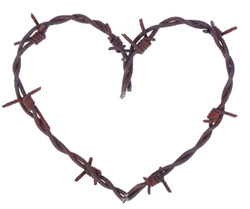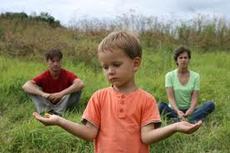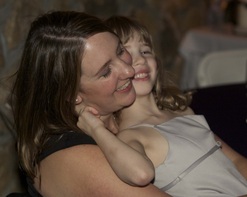
 Invisible Step-parent? I’m writing an article inspired by a client about how step parents often feel invisible. If you have any experiences you’d like to share for my article please let me know either by posting or emailing me at [email protected]. Also, please let me know if you’d like to be anonymous. I’ve felt this way myself and am very interested in other people’s experiences. I’m also interested in what happened to resolve these feelings if they have been resolved. Thank you!!!!
4 Comments
 DEBRA CRAWFORD ANNIS LAW & MEDIATION OFFICES CRAWFORD ANNIS & CRAWFORD Monterey, CA EGO DEFENSE MECHANISMS DENIAL: Denying an event is happening. The client acts as though nothing is occurring.
TRANSFERENCE: Transferring feelings from an earlier powerful relationship with a figure from the past, such as a parent, to someone, such as an attorney, in the present. ACTING OUT: Translating the feeling into behavior. COMPENSATION: Making up for feelings of inferiority in one area by becoming excessively competent in another area. RATIONALIZATION: Giving a rational reason to behavior which is performed for another unconsciously unacceptable reason. PROJECTION: Attributing an emotion to another which is really felt by the client. REPRESSION: Keeping a thought, feeling or impulse at an unconscious level. ATONEMENT: Making up for an unacceptable act by performing a good act. SUBLIMATION: Expressing "taboo" or forbidden impulses through creative channels. DISPLACEMENT: Expressing a forbidden feeling one has about a powerful figure towards a less powerful, safer object. FANTASY: Engaging in fantasy to overcome an assault to self esteem. REACTION FORMATION: Acting in a way directly opposite to the unconscious impulse, or feeling. REGRESSION: Reverting to behavior characteristic of an earlier, less mature stage of development. COUNTERTRANSFERENCE: Transferring feelings by the attorney/therapist to patient/client. The professional may be responding to transference on the part of the client/patient, or may be responding to an earlier figure from the professional's past, e.g., the professional's ex-spouse. Click here for printable page. Debra Crawford Annis Family Law/Divorce Attorney & Mediator Monterey, CA  Child Custody Guidelines I continue to be amazed at the lengths to which some parents will go to hurt the other parent. The most heinous examples involve using their children to hurt the other parent. I have long been a proponent of putting the children first. Some guidelines adapted from various child awareness programs follow. Parents can create a safer, more secure and harmonious environment for their children by following these suggested guidelines: 1. Refrain from saying anything of a derogatory nature about the other parent in the presence of the child(ren). 2. Refrain from bringing up past grievances regarding the other parent to the child(ren). 3. Refrain from discussing financial and legal issues and disputes with child(ren). 4. Refrain from saying anything which might discourage the child(ren) from spending time with the other parent, and from pressuring the child(ren) to take sides against the other parent. 5. Spend as much time as possible with the child(ren) during the time you are responsible for them. 6. Carefully avoid scheduling or arranging activities for the child(ren) which are likely to conflict with any time period allocated to the other parent. 7. In the event that you are unable to keep the scheduled arrangements with the child(ren) on a given occasion, notify the other parent at the earliest possible opportunity. 8. Arrange ahead of time for both parents to be authorized in writing in case of emergency to take any and all actions necessary to protect the health and welfare of the child(ren). 9. Keep the other parent advised at all times of your current residence address, telephone numbers (home and work), your child(ren)'s school or child care facility, and the location where your child(ren) will be spending any extended period of time (four days or more). This information is not to be used for the purpose of harassing or annoying each other in any way, but in case of emergency. 10. Since it is both frightening and damaging for children to be exposed to violence and parental conflict, avoid arguments, fights, and threats in the presence of the child(ren). 11. Since child(ren) need to be able to depend on and to trust both parents, keep the agreements and promises you have made to the other parent and to your child(ren). This means being reliable about keeping appointments and schedules, being prompt, and not making promises to children that you cannot keep. 12. Cooperate fully, not only in carrying out the written terms of your court order or agreement, but in living up to the underlying spirit of the order as well. 13. For your child(ren)'s sake, make a special effort to set aside your personal feelings toward the other parent and maintain an attitude of tolerance, flexibility and good faith. Debra Crawford Annis - Law & Mediation Offices Family Law/Divorce Attorney & Mediator Monterey, CA Click here for printable form. [email protected]; www.CalDivorce123.com  The Anatomy of a Divorce I. Psychological Divorce. The psychological divorce consists of one or both of the partners beginning to think of himself or herself separately from the relationship. This eventually signifies an end of emotional ties to the other partner. This divorce generally occurs before the legal divorce. Until the psychological divorce is complete, the partners are still enmeshed and resolution of the legal divorce (especially child custody and personal property division) is difficult. II. Social Divorce. The social divorce consists of a number of stages through which the family members pass. In her book Mom’s House, Dad’s House, Isolina Ricci has set forth several stages through which the family members pass in the divorce process. Stage 1: Both parents are living together. The is the traditional nuclear family. Stage 2: The family experiences a period of tension caused by some change in the family system or some change in the relationship. All families go through this stage and most families oscillate between Stages 1 and 2 throughout the history of their relationship. Stage 3: The family is undergoing severe stress. Communication has broken down between family members. One of the partners may have already undergone a psychological divorce, but has not taken official steps either through separation or contacting an attorney. During this stage many families seek professional counseling and often move back to Stages 1 and 2. Stage 4: This stage involves the actual physical separation where one of the partners moves out of the family home. This move is always extremely traumatic for the whole family. No matter how "psychologically divorced" a person may be, the very changing of the physical structure of a family causes enormous stresses for all individuals. Questions of economics, future parenting, possession of property and the whole nature of the family are brought up for immediate solution. (According to one study, 80% of children going through divorces just wake up one morning and one of the most significant persons in their lives has moved out.) Stage 5: One or both of the partners contacts an attorney for legal representation to protect their interests if they haven’t done so already. Children are generally very poorly prepared for this stage and this event causes enormous stress for the children. Stage 6: This stage consists of the beginning of adjustment. Two homes are established, but the family members have not yet adopted new patterns of living. This stage is often the one associated with the greatest degree of conflict and confusion in the divorce process. Stage 7: This final stage of the social divorce process involves the creation of two new homes. Frequently, both parents have remarried and settled into a comfortable routine. Parents feel satisfied with their lives and are able to refocus their energies as parents and in their personal lives. Unfortunately, many families do not ever arrive at stage 7. III. Legal Divorce. The legal divorce is where this office plays the largest part in your divorce. In this aspect of divorce, the rights and responsibilities of the parties are defined through the legal process. Either the parties or the Court decide the issues: custody, support, property rights, etc. We encourage mediation where the parties are in charge of these decisions. Click here for Printable Form Debra Crawford Annis Monterey, CA Family Law/Divorce Attorney I've been reading Splitting by Bill Eddy, LCSW, JD and Randi Kreger. One of our local pyschologists stated that most High Conflict Divorces involve a personality disorder in at least one of the spouses, most commonly Borderline Personality Disorder. The authors explain that people with Borderline Personality Disorder use a defense mechanism called "splitting" where they see people as "all good or all bad, an extreme way of coping with confusion, anxiety, and mixed feelings. Spliting is especailly prevalent under stress, particularly the stress of breaking up with someone" they view as "critical to his or her emotional survival." They go on to list behaviors that can be exhibited by these persons in a divorce: 1) Hitting you or destroying your property; 2) Trying to keep you from leaving a room or the house; 3) Harassing you by phone or taking away your phone; 4) Hiding money; 5) Refusing to work; 6) Hurting the children; 7) Alienating the children; 8) Kidnapping the children; 9) Spreading rumors to your family and friends; 10) Using the court system to humiliate and control you; 11) Making false allegations of child abuse against you; 12) Making false allegations of domestic violence against you; 13) Making false allegations that you are alientating the children; 14) Making false allegations that you are hiding money; 15) Telling the court that you earn a lot of money but are unwilling to pay. (pages 17-18)
The authors state that you should take neither an agressive or passive approach to this behavior, but an assertive approach. They give examples of the assertive approach, including knowledg of the issues and not letting the person's traits drain your energy. The book explains these approaches in much detail. Borderline Personality Disorder is: A pervasive pattern of instability of interpersonal relationships, self-image, and affects, and marked impulsivity beginning by early adulthood and present in a variety of contexts, as indicated by five (or more) of the following: (1) frantic efforts to avoid real or imagined abandonment. Note: Do not include suicidal or self-mutilating behavior covered in Criterion 5. (2) a pattern of unstable and intense interpersonal relationships characterized by alternating between extremes of idealization and devaluation (3) identity disturbance: markedly and persistently unstable self image or sense of self (4) impulsivity in at least two areas that are potentially self-damaging (e.g., spending, sex, substance abuse, reckless driving, binge eating). Note: Do not include suicidal or self-mutilating behavior covered in Criterion 5. (5) recurrent suicidal behavior, gestures, or threats, or self-mutilating behavior (6) affective instability due to a marked reactivity of mood (e.g., intense episodic dysphoria, irritability, or anxiety usually lasting a few hours and only rarely more than a few days) (7) chronic feelings of emptiness (8) inappropriate, intense anger or difficulty controlling anger (e.g., frequent displays of temper, constant anger, recurrent physical fights) (9) transient, stress-related paranoid ideation or severe dissociative symptoms Further information on Borderline Personality.  Reflections on Motherhood When Jamison asked me to write something for the Mother’s Day Issue I was overwhelmed. How does one describe being a Mother? It is INDESCRIBABLE. It is all encompassing. It defines who we are. It leads to both more joy and more sorrow than anything else. There is nothing like the feeling of being about to burst with joy with the happiness of your child. There is nothing like the sinking, aching feeling when your child is in pain. And, as my Mom says, "It’s a job that never ends." One of the most exciting times of my life was the days just before my first child, Will, was born. I had survived the pregnancy and was focusing on the birth process and my son that was about to be born. I knew my life was about to change radically and was so excited to begin the grand adventure of Motherhood. My life did change in an amazing way after Will was born. All of the sudden things really mattered. I mattered. I was responsible. This child depended on me. Who would care for him if something happened to William and me? Excitement, responsibility, and worry. That’s Motherhood. I loved being a mother and worked mostly from home so I could spend as much time as possible with my joyful Will. But it wasn’t until about a year and a half later that I began to think of myself as a REAL mother as I earnestly said to my toddler, "Honey, please don’t wipe your face on the tablecloth." Reality swept through me, "I’m an honest-to-goodness mother!" I chuckled to myself and thought, "What a great name for an Erma Bombeck book!" Motherhood certainly has a way of grounding you! My children, Will and Cassie, are a constant source of joy and light. We are fortunate to have a lifestyle where we spend lots of time together and really know and enjoy each other. We have animals that enrich our lives. We live off the grid on solar power. We try to be responsible stewards of our land and its resources. I’m thankful that I can pass on to my children the love of country life that my parents instilled in me. I really try to listen to my children and discover who they are. They are both unique -- Will with his intelligence, integrity, wit, and wisdom, and Cassie with her logic, helpfulness, energy, and perseverance. Motherhood is a state of mind – a state of being. It doesn’t matter how it is created. It’s not merely a function of giving birth. It creates a bond between women that is unbreakable. I am so lucky to have a mother, grandmothers, aunts, sisters, sisters-in-law, and friends to share the bond and experience with. My little sister just had a baby and one of my clients who is a kindergarten teacher crocheted an afghan for the baby! That’s what Motherhood is all about. One of my favorite things is at the supermarket when a child cries a plaintive "MOM" and every mother - young and old - turns to look. It always brings a smile to my face and warmth to my heart. That’s Motherhood. We recently shared an experience that exemplifies the toughness, tenderness, and responsibility of Motherhood. We had a wonderful older horse, Sunny, that was given to us by the Friday family. Sunny was a hardy old guy that had finished many endurance rides, ridden through the Ventana Wilderness countless times, packed many miles, and given children lots of rides and tenderness. Sunny was Will’s horse, but we all enjoyed riding him, feeding him carrots and apples, and just plain being with him. He was always calm and in good temperament. Sunny was a treasured member of our family. In March, Sunny met with some unfortunate circumstances and was unable to enjoy life the way he used to. Although hurting, he remained chipper and gave us a loud vigorous whinny when he saw us. But he got down and his legs were giving out. We realized that it was time to think about a tough decision that the Vet had recommended. And then darned if he didn’t get himself back up standing again. What stamina and determination. But he was still in great pain. We figured this would be the time to do it as he was tough and proud and didn’t like being unable to get up. If he went down again, it’d be the last time. What a tough decision. We talked and cried. I told the tearful tale of the death of my filly when I was 12. We talked and cried some more. My heart ached for Sunny and my children. We decided that he deserved the dignity of dying while he was still on his feet. William made the arrangements. The Vet came later that day and we all attended Sunny in his final moments. We shared a bag of apples with him, brushed him, talked to him, and loved him. Sunny’s life ended peacefully and lovingly. With serendipity, four hours later, our pregnant mare gave birth. Luckily, I was there because only one foot and the nose appeared. There was no time to call the rest of the family to be present for the birth. I located the other hoof and gently reached up the leg and pulled it to where it should be for a proper delivery. The birth continued and when the head was delivered I saw a huge white Sun-shaped star on the baby’s head through the thin amniotic sac. What a blessing! We’d already decided to name the baby "Little Sunny." Little Sunny Girl is strong and vigorous and runs with exuberance. Sunny would be proud of his namesake. Tears of joy and tears of sorrow. That’s Motherhood. Happy Mother’s Day! This article was orignally published by Jamison Kaufman in Carmel Valley Magazine (May 2006). It is reprinted here with her permission. Jamison is still doing graphic design. Check out her website at Red and Yellow Gecko Design. |
Debra
|

 RSS Feed
RSS Feed